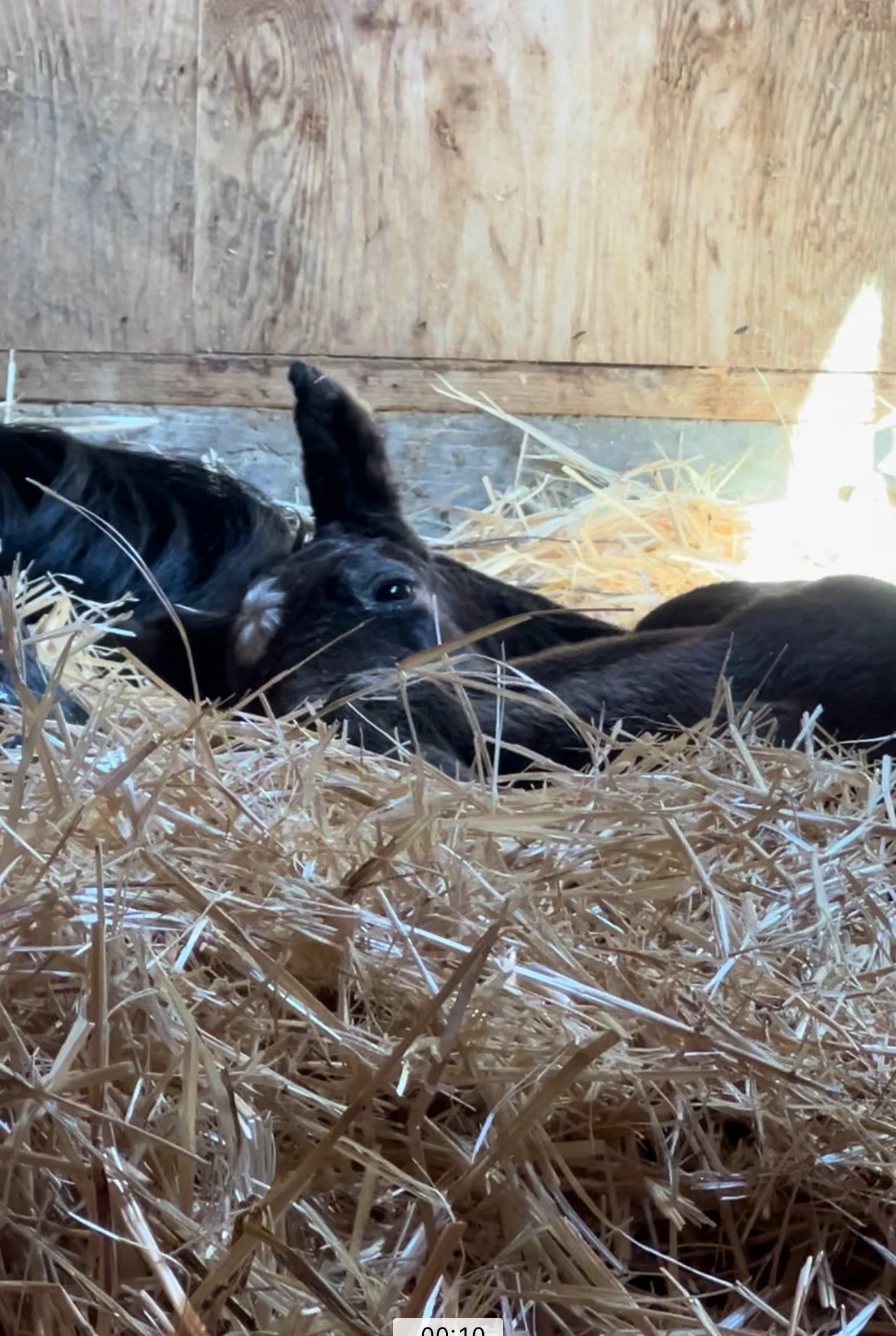The Hidden Cost of Neglect: One Life, Two Stories
The Hidden Cost of Neglect: One Life, Two Stories
Published by Horse & Halo | May 3, 2025
Yesterday morning, a newborn filly entered the world—and she’s already fighting for her life. Diagnosed with neonatal maladjustment syndrome, commonly known as “dummy foal syndrome,” she’s struggled since birth to nurse and bond the way a healthy foal should.
But this story didn’t begin yesterday. It started long before she took her first breath.
A Mare’s History, A Foal’s Burden
Her mother, Stella, came from the Wyoming group—unhandled, underweight, and nutritionally deprived throughout her life, especially during pregnancy. Years of malnutrition don’t just vanish once a horse is rescued and fed. They shape everything: from a mare’s musculature to her ability to carry and support a developing foal.
Now, we’re seeing the ripple effect. The consequences of long-term neglect have carried into the next generation—leaving this foal with contracted tendons, critical nursing issues, and until this morning, unable to stand without assistance.
Complications from Compromised Care
While healthy, well-cared-for mares can still give birth to foals with complications, mares who’ve suffered from years of poor nutrition, lack of veterinary care, and zero handling are significantly more likely to produce foals with serious health challenges.
And when a mare is unhandled, providing care becomes even harder. There are few local resources equipped to manage horses who lack horse-human trust—especially strong, powerful mares like Stella. That means every step—guiding the foal, checking the udder, watching for discomfort—must be done with caution and creativity.
What We’ve Done
We’ve acted quickly and thoughtfully to give this filly the best possible start, including:
Helping her stand and nurse every hour
Attempted Providing supplemental feeding (bottle and pan)
Using the Madigan Squeeze Technique, administered by our veterinarian
Making environmental adjustments to the mare’s feeding position to give the foal better access to both teats—nursing from one each hour to relieve the udder evenly and encourage colostrum intake
What’s Next: Testing for Immunity
Today, our veterinarian will perform an IgG test to determine whether she’s absorbed enough antibodies through the colostrum to build a functional immune system. If she hasn’t, she’ll be at risk for life-threatening infections.
Neglect doesn’t always end when a horse is rescued. Sometimes, its impact shows up months later, through the struggles of the next life. More to come


